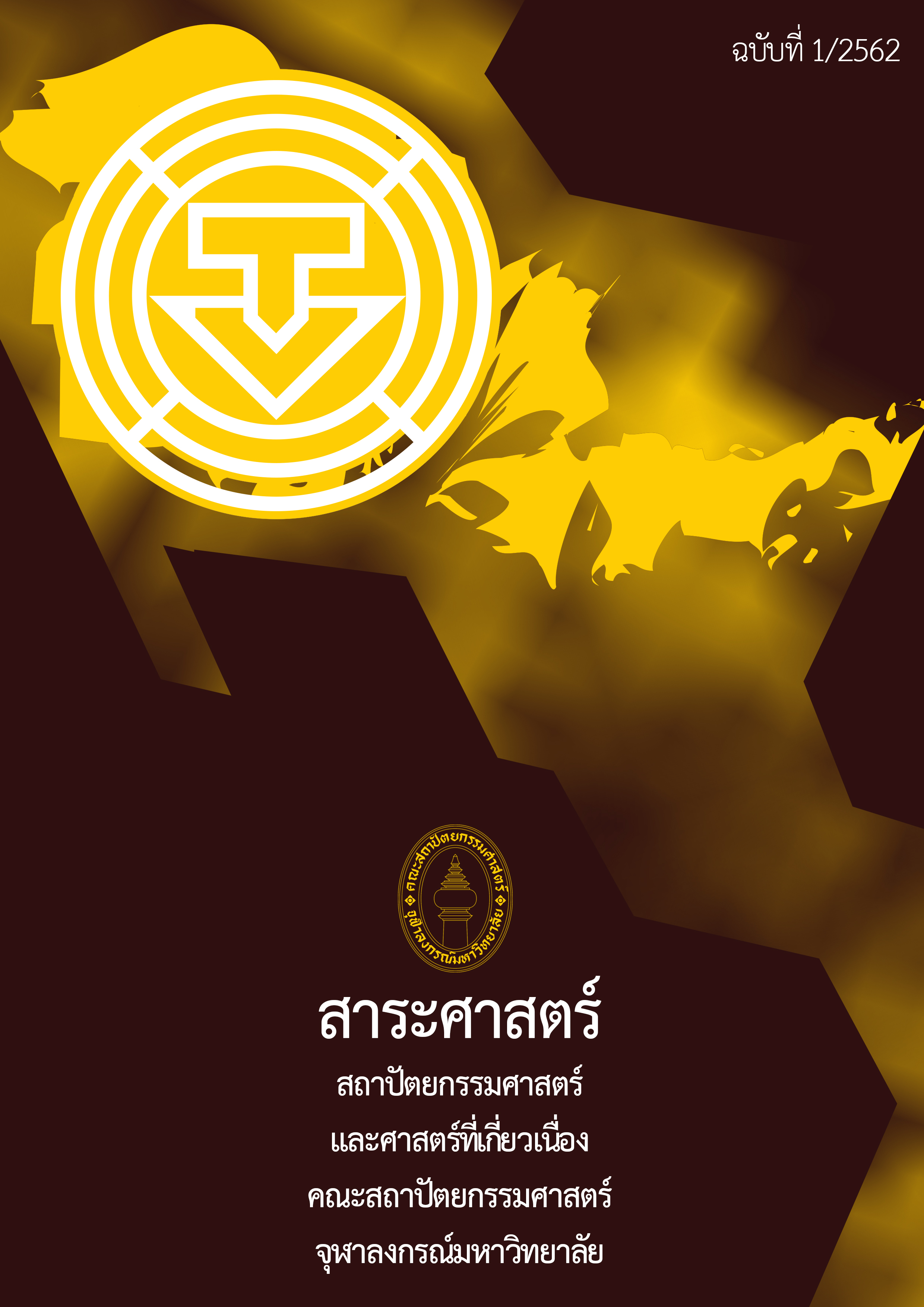Facility Management of Elevated Train Stations Case study The BTS Sky Train Stations
Main Article Content
Abstract
This article is part of a thesis which studies the Train Stations management - Case Study Approach of BTS Station method. The train station’s selection criteria on different platforms are Saphan Taksin Station, Asok Station, and Siam Station. The results of the research are collected by user’s interview, Field Survey and operators of different periods, therefore all results are analyzed and summarized before finished.
The study realized that the station area used in the building is around the same of the entire building. The larger area is where the users circulate on it, followed by the area occupied by the machines and electrical part. Retail Area and Staff Area, respectively. All stations open and close on the same time (19 h) and (5 h). The peak of passengers was around 7: 00-8: 00 AM and 5: 00 - 7: 00 PM for all stations. In addition, all stations have same Facility Services including 1) Cleaning services is outsourcing and stationed. The scope of work is both stations and walkways except the shop floor and engineering area. 2) Security is outsourcing and stationed. The scope of work is passenger area and walkway. The opening hours will be stationed at the entrances to the station. 3) Pest and Control is outsourcing and stationed. The work is only in station close time. 4) Maintenance is in-house and outsourcing which are separated by engineering system. The team of maintenance technicians are from the center of organization to take care of the operation. The scope of work is oversee all Engineering systems.
The study concludes that the factors that affect the operation are: Physical Factor and Building Factor including building space affects the number of cleaning doer. Space using affects the way the space is organized. The entrance to the station the platforms and building walkway affect the number of security doer. The station's use affects the maintenance of the building system. The proportion of space and the proportion of work done in all cases was similar. Therefore, the physical appearance of BTS stations does not affect the performance of the service and the building.
Article Details
References
บริษัท ระบบขนส่งมวลชนกรุงเทพ จำกัด (มหาชน). “ระบบโครงสร้างทางวิ่งและสถานี.สถานี.หลักการออกแบบ.” สืบค้น 27 มีนาคม 2560. http://www.bts.co.th.
สำนักงานนโยบายและแผนการขนส่งและจราจร. โครงการศึกษาปรับแผนแม่บทระบบขนส่งมวลชนทางรางในเขตกรุงเทพมหานครและปริมณฑล. กรุงเทพมหานคร: ม.ป.ท., 2553.
เสริชย์ โชติพานิช. การบริหารทรัพยากรกายภาพ:หลักการและทฤษฎี. กรุงเทพมหานคร: โรงพิมพ์แห่งจุฬาลงกรณ์มหาวิทยาลัย, 2553.
Transportation Research Board of the National Academies. “Maintenance and Operation of Transportation Facilities: Strategic Vision.” Transportation Research Circular (January 2016): 1-20.


